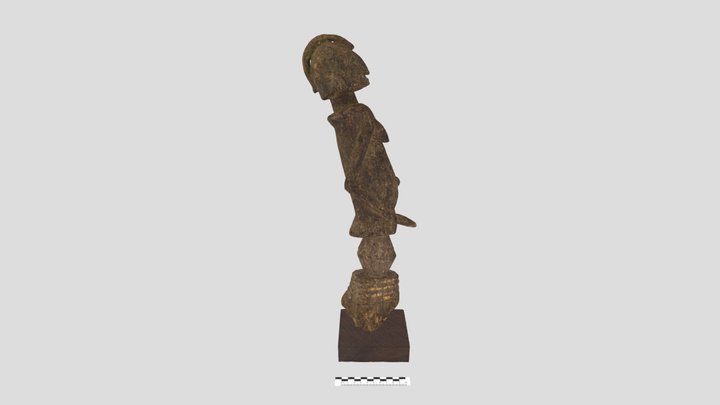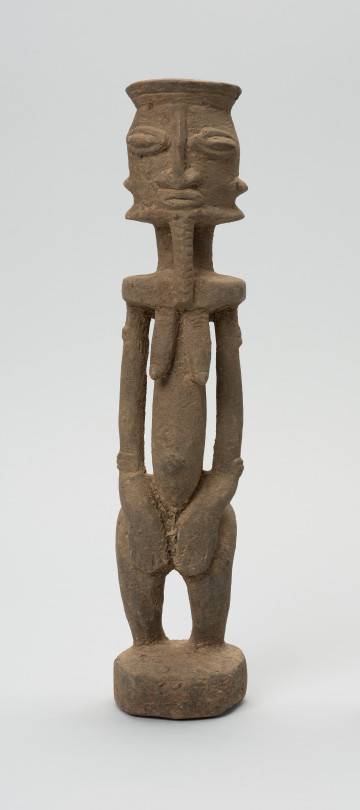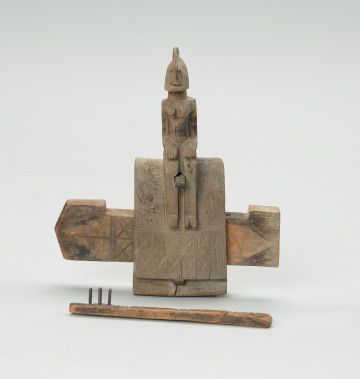
Figure - ancestor
między 1901 — 1950
National Museum in Szczecin
Part of the collection: Collection of Dogonian art
There are many cosmogonic themes in the Dogon myths that reflect a great deal of knowledge about the Cosmos. Some of them describe in a surprisingly precise way the star system of Sirius. The Dogon believe that Sirius, as the brightest in the sky, is a triple star. It is accompanied by a dark, small and heavy star, orbiting Sirius in an elliptical orbit every fifty years, and a second, light star, near which a planet that is the homeland of the Dogon ancestors exists. Sirius (commonly called Sirius A), does indeed have a dark companion, Sirius B (a white dwarf), which orbits the visible star in an elliptical orbit every 50.04 ± 0.09 years. The theory first appeared in science in 1844, when the German astronomer F.W. Bessel discovered that Sirius moves with a wave motion. On this basis, he put forward the hypothesis that the star has a dark companion whose gravity causes it to move along a sinusoidal curve. The final confirmation of that hypothesis came from A. Clark, an American optician and telescope builder. In 1862, while testing his newest instrument, he discovered a second star near Sirius, which turned out to be the first white dwarf observed directly through a telescope. The existence of a third star (Sirius C) has not been confirmed to this day, but astronomers have suggested for years that the motion of the A and B pair is disturbed by the third star.The Dogon's knowledge of the Cosmos is not limited to the Sirius system. The inhabitants of the Bandiagara Escarpment distinguish stars from planets, galaxies from stars. They know that the planets of our system, including the Earth, revolve around their axes and circle the Sun, that Jupiter has four moons and Saturn is surrounded by a ring. Myths are also repeated in their oral tradition, recalling the Big Bang theory, which was the cause of the creation of the Universe.
Ewa Prądzyńska
Author / creator
Dimensions
cały obiekt: height: 43 cm, width: 6 cm
Object type
figure
Creation time / dating
Creation / finding place
Identification number
Location / status

między 1901 — 1950
National Museum in Szczecin

między 1951 — 2000
National Museum in Szczecin

circa 1970
National Museum in Szczecin
DISCOVER this TOPIC
National Museum in Lublin
DISCOVER this PATH
Educational path